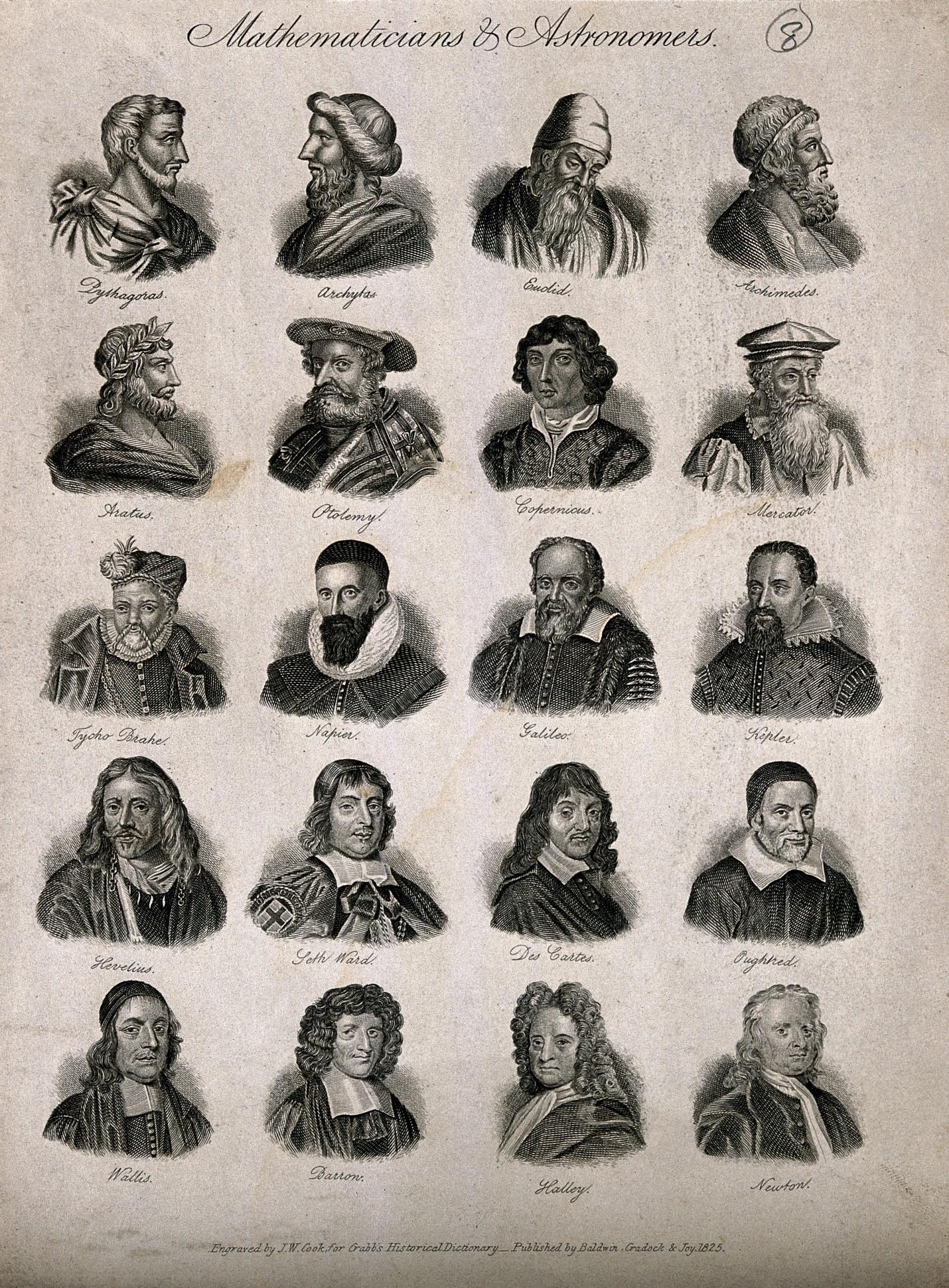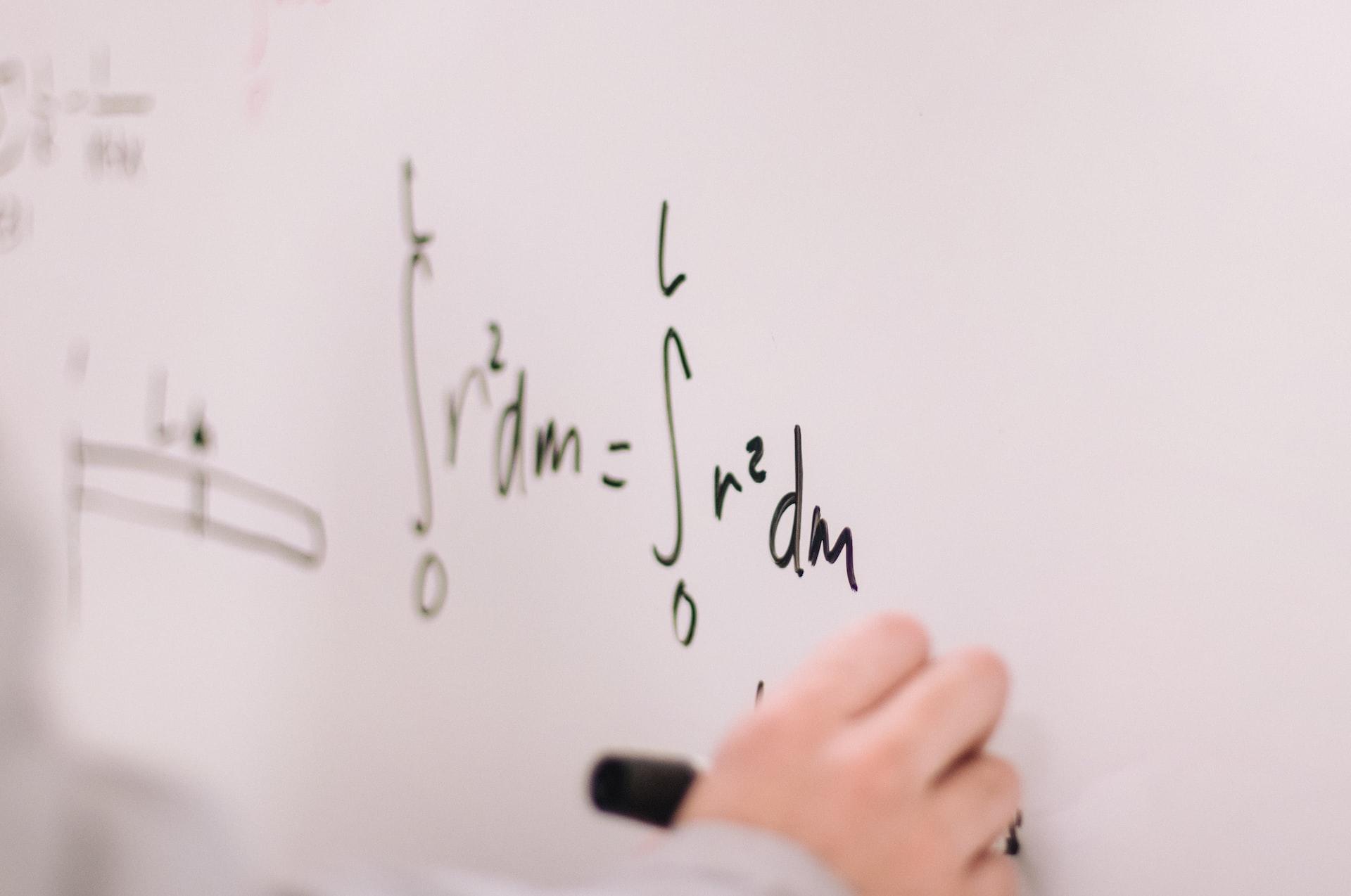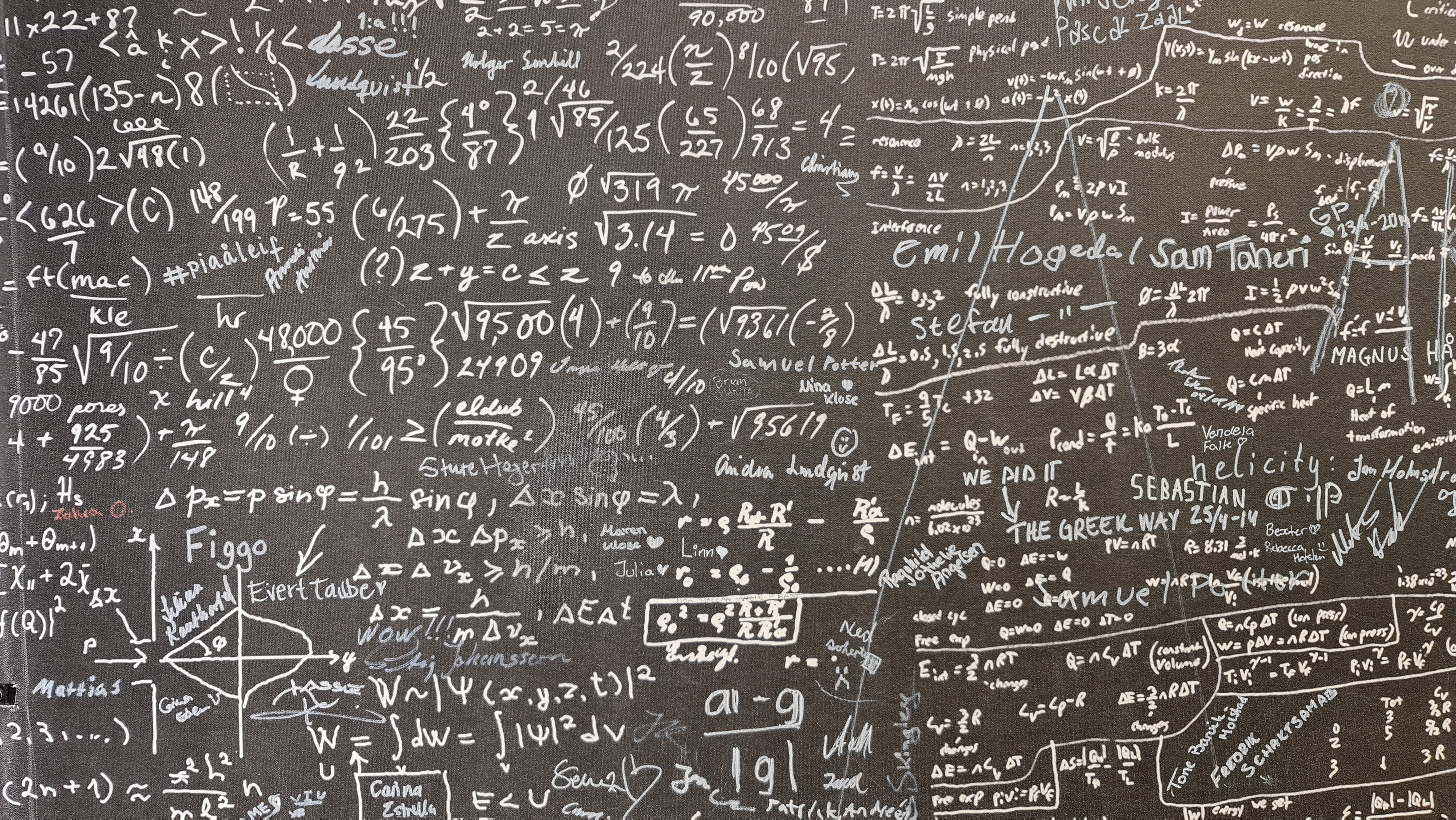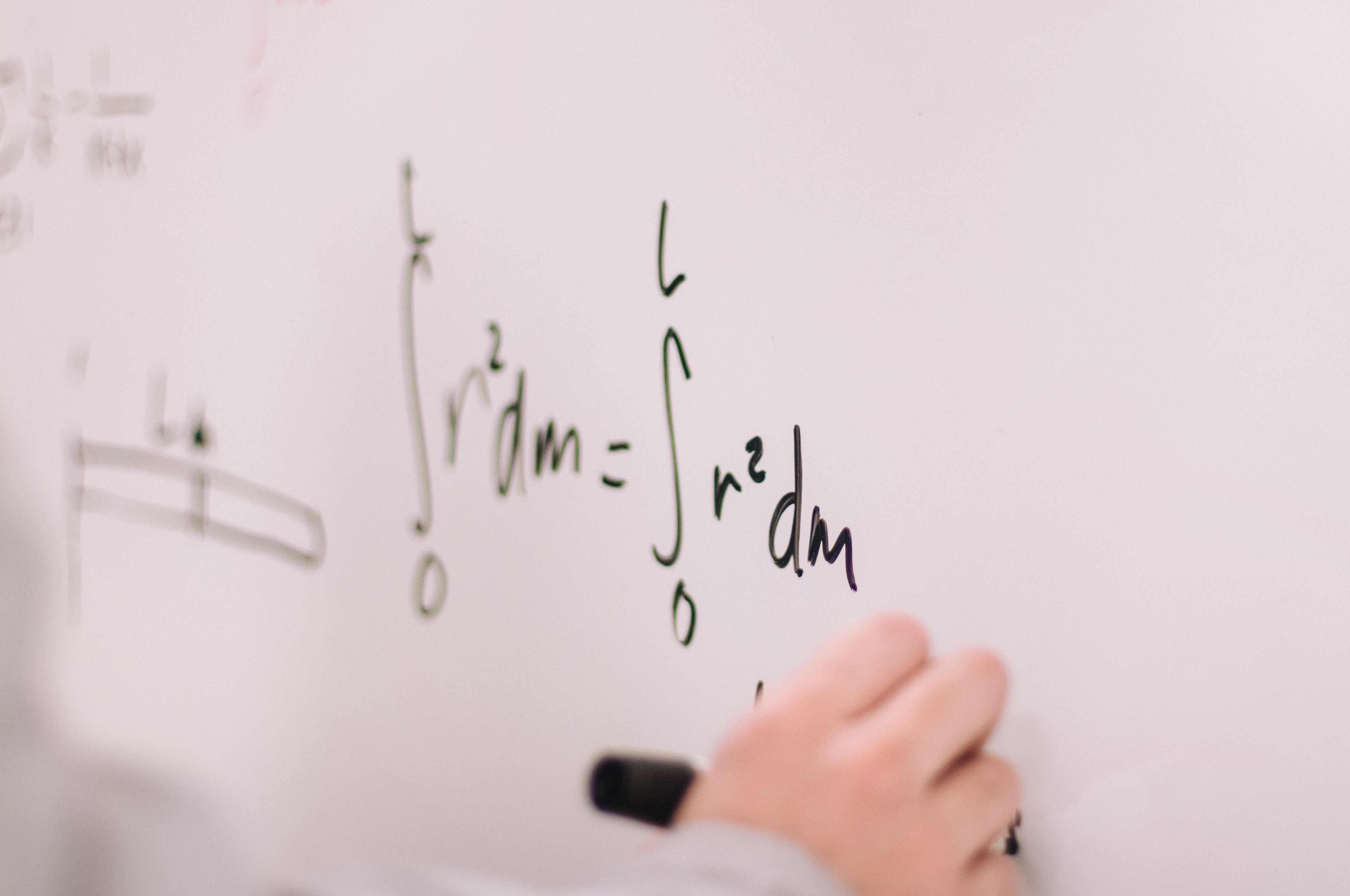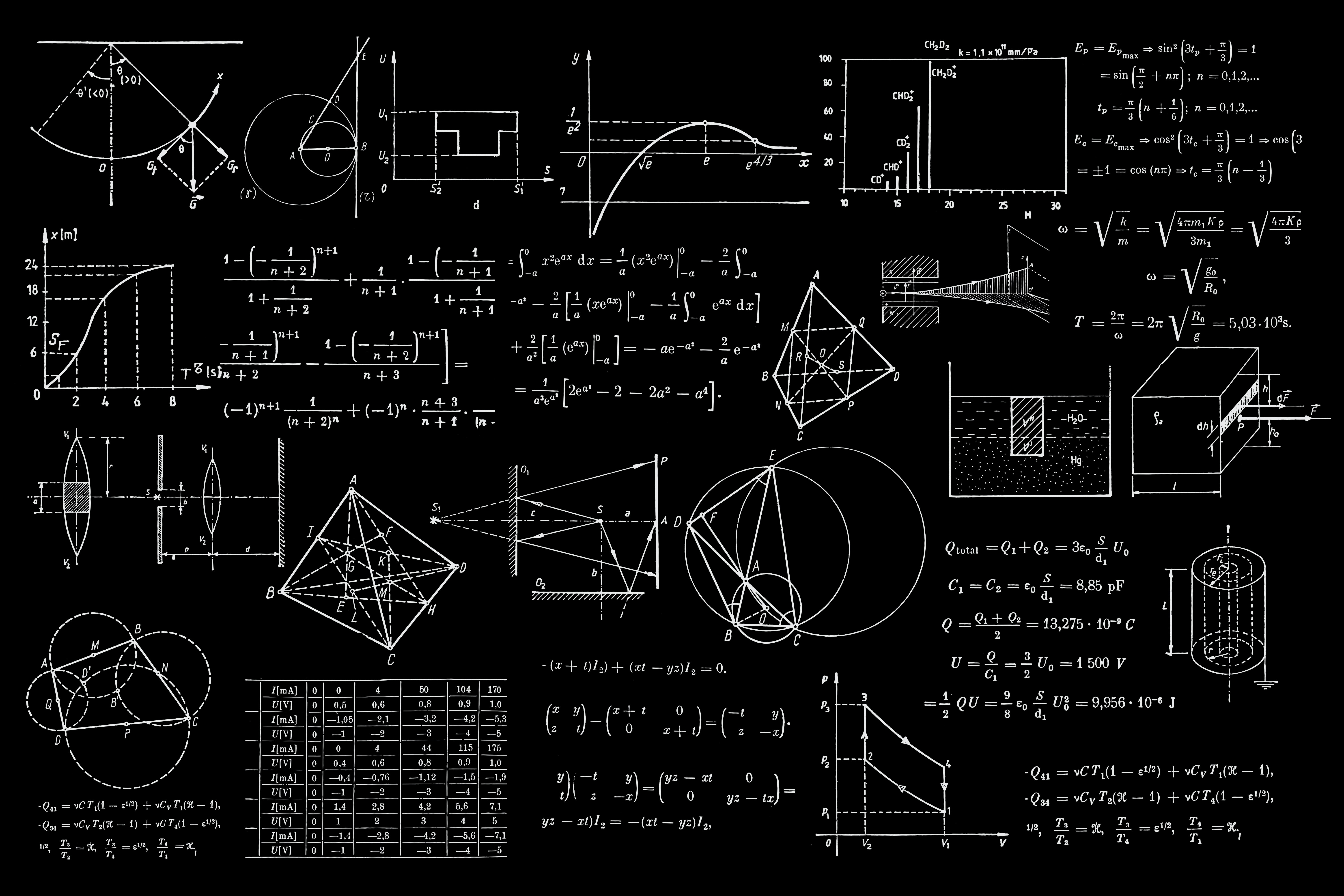Over the course of history, many mathematicians have created numerous theorems and have succeeded in proving them through the process of experimentation. Prime numbers, differential calculus, analytic geometry, algebra – all of the history of math can be seen to run in parallel with the history of sciences. Discover some of the most famous mathematicians who have helped shape mathematics over the centuries.
| Mathemetician | Birth & Death | Branch of Math |
|---|---|---|
| Thales | c. 624–546 BCE | Geometry, Number Theory |
| Pythagoras | c. 570–495 BCE | Geometry, Number Theory |
| Euclid | c. 300 BCE (exact dates unknown) | Geometry |
| Archimedes | c. 287–212 BCE | Geometry, Calculus, Mechanics |
| Brahmagupta | 598–668 CE | Algebra, Number Theory, Astronomy |
| Muhammad Al-Khwarizmi | c. 780–850 CE | Algebra, Arithmetic |
| René Descartes | 1596–1650 | Analytical Geometry, Algebra |
| Sir Isaac Newton | 1643–1727 | Calculus, Mathematical Physics |
| Emmy Noether | 1882–1935 | Abstract Algebra, Theoretical Physics |
| Srinivasa Ramanujan | 1887–1920 | Number Theory, Infinite Series |

Thales (c. 624–546 BCE)
Thales was born around 624 BCE in Miletus, an ancient Greek city in what is now Turkey.
His early education was likely influenced by Egyptian and Babylonian mathematics, as he traveled extensively and studied their knowledge, learning geometry, astronomy, and philosophy. He is credited as one of the first people to use deductive reasoning in geometry, and he became known as one of the Seven Sages of Greece.
After completing his apprenticeship studies, Thales returned home and became a professor, teaching his disciples all about what he had learned as well as his original theories.
Thales made significant contributions to mathematics and philosophy. He developed what is now known as Thales' Theorem, which states that any angle inscribed in a semicircle is a right angle. He also attempted to measure the height of the Egyptian pyramids using their shadows and introduced abstract reasoning in mathematical proofs.
Thales’s knowledge also extended to the field of astronomy. These astronomical discoveries included how to use the little dipper, or ursa minor, to guide sailors in the open ocean; how to calculate the duration of a year in relation to solstices and equinoxes; and how to identify the trajectory of the sun between the two tropics.
Pythagoras (c. 570–495 BCE)
Pythagoras was born around 570 BCE on the Greek island of Samos. His father, Mnesarchus, was a merchant, and his mother, Pythais, was from a noble family. Pythagoras was a very gifted and athletic student. Most notably, he participated in the Olympic games in the category of combat.
He studied mathematics and philosophy in Egypt and Babylon and may have even studied under Thales for a time in his youth. Pythagoras was interested in philosophy, history and the sciences.
He eventually founded a religious and philosophical school in southern Italy. His followers, the Pythagoreans, believed that numbers had mystical properties. Pythagoras is a fascinating figure in the intersection of religion and mathematics.
Pythagoras is best known for the Pythagorean Theorem, which describes the relationship between the sides of a right-angled triangle. His work also explored mathematical patterns in music and nature, and he contributed to the early development of number theory.
Tthe square of the hypotenuse (the side opposite the right angle) is equal to the sum of the squares of the other two sides. Or, a2+b2=c2.
Pythagorean Theorem
Euclid (c. 300 BCE (exact dates unknown))
Euclid was born around 300 BCE. Though it's likely he was born a Greek, he spent most of his life in Alexandria, Egypt, where he taught and studied mathematics.
His education was likely influenced by the mathematical traditions of Greek and Egyptian scholars. He was highly respected for his logical approach to mathematics. Unlike other mathematicians of his time, Euclid focused on organising existing mathematical knowledge systematically rather than making new discoveries.
Euclid is often called the "Father of Geometry" because of his work, Elements, a mathematical textbook ("Mathematics Bible") that systematized geometry using axioms and logical proofs. This book remained the foundation of mathematical education for centuries. Elements consists of thirteen books covering topics such as plane geometry, number theory, and three-dimensional geometry. His influence covered topics including trigonometry, algebraic reasoning, equations, fractions, logarithms, Euclid's axioms, Euclidean division, Euclidean geometry, and Euclidean algorithms.
Euclid managed to prove Pythagoras’ theorem and develop the function of the greatest common divisor (GCD) as well as the HCF (highest common factor) in Euclidean divisions. Euclidean divisions are nothing but the simple division taught in elementary school. This division involves the four main elements: a dividend, divisor, quotient and remainder.
His deductive approach and logical reasoning influenced not only mathematics but also fields like philosophy and logic. Beyond Elements, Euclid also wrote works on optics, conic sections, and mechanics. His book Optics was one of the first known studies of perspective and visual perception.
Archimedes (c. 287–212 BCE)
Archimedes was born around 287 BCE in the Greek city of Syracuse, on the island of Sicily. His father, Phidias, was an astronomer, which may have influenced his interest in science and mathematics.
He studied in Alexandria, Egypt, under the guidance of Greek scholars. Even as a young man, he displayed remarkable talent in mathematics and mechanics, known for his penchant for inventing machines.
Archimedes made groundbreaking contributions to geometry, calculus, and mechanics. He formulated the principle of buoyancy (Archimedes' Principle) and developed methods for calculating areas and volumes. He also designed innovative war machines to defend Syracuse and devised an early form of calculus for approximating pi. With his buoyancy knowledge, he aided in the construction of the biggest boat of Antiquity: the Syracusia.
Archimedes also took pleasure in calculating areas, like the area under a parabola and other figures.
Amongst all of his machines, he developed also the Archimedian screw, which was utilised to move liquid from a lower altitude to a high one. Archimedes died in Syracuse during the Roman invasion. His legacy continued to influence some of the world’s biggest scientists, including Leonardo da Vinci.

Brahmagupta (598–668 CE)
Brahmagupta was born in 598 CE in India, in the region of present-day Rajasthan. His background is not well-documented, but it is known that he grew up in a scholarly environment.
He studied at the astronomical school in Ujjain, which was a major center of learning. His mathematical talent became evident at a young age.
Brahmagupta is famous for formalizing the concept of zero and negative numbers. His book Brahmasphutasiddhanta laid out rules for arithmetic operations involving zero, which were revolutionary for their time. He also worked on quadratic equations, the properties of numbers, and astronomical calculations.
He is also known to have described gravity as an attractive force in 628 CE, about a millennium before Newton’s work.
His work provided methods for solving quadratic equations and introduced concepts of arithmetic operations with positive and negative numbers. Brahmagupta's contributions influenced later mathematicians in both the Islamic and European worlds.
Search for an online math tutor on Superprof.
Muhammad Al-Khwarizmi (c. 780–850 CE)
Al-Khwarizmi was born around 780 CE in Persia, in what is now Uzbekistan. His family moved to Baghdad, where he studied at the House of Wisdom, a major centre for learning.
His education was influenced by Greek, Indian, and Babylonian mathematics. He became one of the leading scholars of his time.
Al-Khwarizmi is best known for his work in algebra, which he described in his book Al-Kitab al-Mukhtasar fi Hisab al-Jabr wal-Muqabala. The term “al-jabr” is the origin of the word “algebra.” He was the first person to describe linear and quadratic equations and describe the concept of “balancing” equations through “reduction.”
He also introduced Hindu-Arabic numerals to the Islamic world, which later influenced European mathematics. In addition to his work in algebra, he contributed to trigonometry, astronomy, and geography. His mathematical techniques laid the groundwork for modern algebraic methods and problem-solving approaches used today.
Check for Maths tutor Sydney here on Superprof.
René Descartes (1596–1650)
Descartes was born in 1596 in France to a well-off family. His father was a lawyer and judge, which provided him with access to a good education. He studied at the Jesuit college of La Flèche, where he excelled in mathematics and philosophy. He later traveled across Europe, developing his ideas.
Descartes wrote many scientific works during his career. He started most notably with The World, or Treatise on Light, which describes many of the physical phenomena of daily life, including the movement of the earth around the sun.
However, his most celebrated work remains 1637’s Discourse on Method. Written entirely in French, Descartes produced many mathematical developments, the most significant of which was his utilization of letters to signify the unknowns in an equation. It is because of this work that we started to utilize the set of letters x,y,z or a,b,c to do the same.
Descartes is famous for developing the Cartesian coordinate system, which bridged algebra and geometry. His work laid the foundation for analytical geometry and influenced the development of calculus. He also emphasized logical reasoning in mathematics. A true polymath, Descartes is often known for his famous philosophical axiom: “I think, therefore, I am.”
There is no one single inventor of mathematics. It developed over time (perhaps thousands of years) with contributions from the Sumerians, Egyptians, Greeks, and other civilisations all learning from each other.
Sir Isaac Newton (1643–1727)
Newton was born in 1643 in Woolsthorpe, England. He attended Trinity College, Cambridge, where he initially studied law but soon focused on mathematics and physics. Although described as a distracted student, Newton was also gifted in building machines. His talents became evident when he formulated early ideas on calculus.
Newton made groundbreaking contributions to calculus, physics, astronomy and optics. He developed the laws of motion and universal gravitation, which revolutionized science. He also worked on power series, derivatives, and binomial expansions, laying the groundwork for modern mathematical analysis.
He helped prove that the formula [(a+b)n] functions no matter what the value of n is. While Newton became an accomplished professor, he also used his free time to study the behaviour of light and, more largely, optics. More specifically, he studied the behaviour of white light on a transparent prism and realized that light separates itself into many beams and different colours.
He used his experiences with light to invent the first telescope reflector, which ended up as a success within his contemporary scientific community around the world.
Emmy Noether (1882–1935)
Noether was born in 1882 in Erlangen, Germany, to a mathematician father. She initially studied languages but later switched to mathematics.
She attended the University of Erlangen and was one of the few women in mathematics at the time. Despite facing discrimination, she excelled in abstract algebra, even becoming a well-remarked figure by male contemporaries.
After her studies, in which she received a Doctorate, she worked as a professor and lecturer for many years without pay, as women were not valued in academics at the time. In 1933, she moved to the United States after being dismissed from teaching by the Nazi party for being a Jew.
Noether’s Theorem, which connects symmetry and conservation laws in physics, is one of her greatest contributions. She also made significant advancements in ring theory, group theory, and ideal theory, which became essential in modern algebra. Her influence extended to quantum physics and general relativity, where her theorem provided crucial insights into physical laws.
Srinivasa Ramanujan (1887–1920)
Ramanujan, who is often considered the best mathematician in the world, was born in 1887 in Erode, India, to a poor but scholarly family. Despite limited formal education, he displayed extraordinary mathematical ability from a young age.
Ramanujan’s research, which he developed much of on his own without teachings from professors, was too far advanced and in an unconventional, self-created notation for the local mathematicians to take note.
He independently developed many theorems before being discovered by British mathematician G. H. Hardy. Hardy arranged for Ramanujan to travel to Cambridge to continue his research and collaborate with other mathematicians.
Ramanujan contributed significantly to number theory, infinite series, and partition functions. His discoveries, such as the Ramanujan Prime and Mock Theta Functions, continue to influence mathematics today. His work in modular forms and continued fractions provided new insights into mathematical analysis.
He was so influential that the publication, The Ramanujan Journal, was invented just for scholars to submit research influenced by Ramanujan’s research.
Despite his untimely death at 32, his notebooks remain a rich source of research material for modern mathematicians.
Learning about the history of mathematics can help shine a light on the advancement of this important concept through history. Without the developments led by these pivotal scholars (and many others), we would not live in the same world we do today!
Find helpful VCE specialist Maths tutor here on Superprof.

